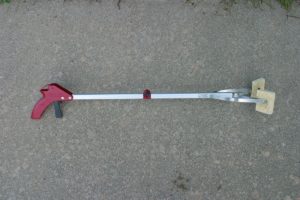May Gardening To-Dos
May is typically Austin’s rainiest month and it’s not unusual for temperatures to start feeling more like summer than spring. Enjoy it before the heat and humidity settle in for good. See below for other things that should be on your May gardening to-dos.
Things to Do in the Garden for May
FERTILIZE
Fertilize trees and blooming shrubs once their flowers have faded. Follow the soil test recommendations.
WATER
Use the cycle-and-soak method on your lawn. Water other plants deeply and as infrequently as you can to encourage deep roots in preparation for stricter water restrictions.
TRANSPLANT
Get the last of the bedding plants in the ground right at the first of the month so roots can become established before the heat arrives. Switch out container plants to warm season annuals that can take the heat.
SOIL
Apply a compost layer and then mulch to suppress weeds and retain moisture. Consider growing a summer cover crop like cow peas or vetch in areas that you can later cut and drop into place for mulch.
LAWNS
Mow as needed and leave clippings on the lawn to maintain soil organic matter.
DISEASES/PESTS TO LOOK FOR
Hornworms will be more prevalent, especially in the vegetable garden. Pick them off plants when you see them and feed them to the birds. Blackspot and other fungal diseases will be prevalent due to the rain. Apply fungicides according to label directions between periods of rain. Monitor vegetable garden for squash vine borers, cabbage loopers, corn earworms, and beetles. Rather than spraying, bag and destroy infested plants since they are nearing the end of their harvesting season.
MAINTENANCE
Keep up with weeding and don’t let them produce seed. Make yourself a weed wiper to spot treat. Since most weeds are annuals, they will go dormant in the coming heat and give you a respite. Prune the last of the spring blooming trees and shrubs after blooms fade. Apply fertilizer according to soil test recommendations. Install drip irrigation systems in ornamental and vegetable beds in preparation for summer. Deadhead flowers.
IN THE VEGETABLE GARDEN
If you’ve planted potatoes, harvest a few new potatoes from the perimeter of the potato plant by carefully pulling back the soil without disturbing the plant. Watch for squash vine borer eggs at the base of stems. Harvest onions when the tops fall over, then let them dry for a week before storing. Plant heat-loving plants like sweet potatoes, Malabar spinach, okra, and Southern peas. Eggplant and pepper transplants can still be planted early this month. See the full Vegetable Garden Planting Guide and Vegetable Varieties for Central Texas. See the full Vegetable Garden Planting Guide (Español, 繁体中文) and Vegetable Varieties for Central Texas.
Your May Indoor Gardening Checklist |
|
|
|
|
FERTILIZE |
Frequency of fertilizer application depends on the growth and age of each plant. As a general rule, use a fertilizer recommended for the specific plant every 2 weeks. |
WATER |
Monitor plants outdoors by using the chopstick method! If the top two Inches are dry, water accordingly |
HUMIDITY |
Carefully monitor your indoor humidity. You shouldn’t require the use of a humidifier during this time. Houseplants will love the hopefully rainy weather this month. |
FOLIAGE CARE |
Plants benefit from an occasional rain shower. Take this opportunity to wipe down leaves and inspect for pests. |
DISEASES/PESTS TO LOOK FOR |
Keep an eye on your plants outdoors. Aphids may be more active during this time. Inspect the undersides of leaves and cut away affected leaves. Dispose of those leaves in the garbage NOT the compost heap. Aphids can also be removed by a strong blast of water. Remember to wipe leaves to remove any remaining tap water. Austin water is salty and leaving tap water on leaves can result in yellowing or browning foliage |
MAINTENANCE |
Remove any spent leaves. While pruning away leggy growth, consider propagating those cuttings!
If night time temperatures are consistently above 60 degrees F, think about moving some of your plants outside. Find a spot out of direct sunlight and wind. Introduce your plants gradually to the outside, letting them spend just a few hours at first and then building up to an overnight stay. Protect them from harsh afternoon sun. You may need to water them more frequently. See more houseplants tips here. |
PROPAGATION |
Plants should be showing signs of new growth. This is a great time to propagate by cutting or division. TIP: variegated varieties of plants like Sansevieria must be propagated by division. Propagation by cutting will result in plant reverting to its non-variegated state. |
 As a contributor to Central Texas Gardener (CTG), Daphne Richards, County Extension Agent-Horticulture, answers questions and shares knowledge on new and tried & true plants for Central Texas. Check out some of our favorites for May!
As a contributor to Central Texas Gardener (CTG), Daphne Richards, County Extension Agent-Horticulture, answers questions and shares knowledge on new and tried & true plants for Central Texas. Check out some of our favorites for May!
 Giant celosia|Daphne Richards|Central Texas Gardener
Giant celosia|Daphne Richards|Central Texas Gardener
 Pruning spring plants|Daphne Richards|Central Texas Gardener
Pruning spring plants|Daphne Richards|Central Texas Gardener
 Why fall-blooming plants flowered early|Daphne Richards|Central Texas Gardener
Why fall-blooming plants flowered early|Daphne Richards|Central Texas Gardener
 Best way to mulch|Daphne Richards|Central Texas Gardener
Best way to mulch|Daphne Richards|Central Texas Gardener
Get Growing!
Galileo, Italian astronomer, physicist, engineer, mathematician, and philosopher wrote, “The sun, with all those planets revolving around it and dependent on it, can still ripen a bunch of grapes as if it had nothing else in the universe to do.” This handy reference will help you enjoy whatever is ripening in your patch of the universe and serve as a guide for what things to do in the garden each month: January, February, March, April, May, June, July, August, September, October, November, and December.

